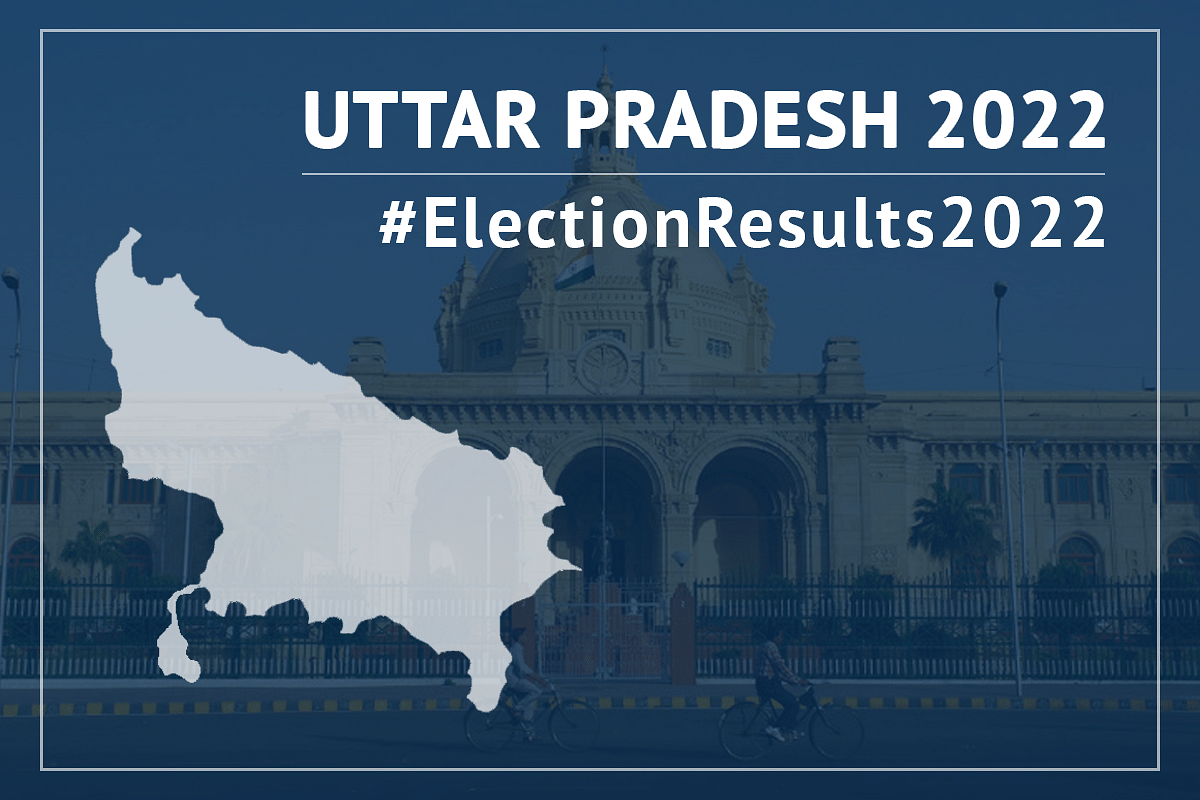Politics
Breaking Down UP Verdict 2022: A Study Of Victory Margins Shows Just How Comprehensive A Mandate It Was For BJP And Allies
- Whichever way we look at the victory margin data set, the SP+ was hard-pressed to come anywhere near the BJP+ in the 2022 UP assembly elections, and this situation is only going to worsen for the SP+.

UP election results
This is the second part of a series on the 2022 Uttar Pradesh assembly elections.
The announcement of the Uttar Pradesh 2022 provincial election results was followed by a flurry of online activity, which sought to play down the mandate received by the Bharatiya Janata Party (BJP) and its allies (BJP+).
Some said that it had been a narrow contest, with the BJP+ just scraping through with narrow margins, in too many seats for the BJP+’s comfort. The Samajwadi Party alliance (SP+), they implied, might in fact have gotten closer to the halfway mark, if only a few votes had fallen this way, rather than that.
Others said that the 273 seats the BJP+ won, with 43.8 per cent of the popular vote, represented a fall in the party’s standing in the state. The rest trumpeted variations on the Duke of Wellington’s theme, and plunkingly concluded that it was ‘a close-run thing’.
But is that factually correct? Was the BJP really pushed to the wall? Was it a close-run thing?
Detailed analyses of the results show, on the contrary, that UP 2022 was in fact a thumping mandate for the BJP+, which should, in 2024, ideally propel them towards an even better showing in the state, than what they registered in the 2019 general elections.
For reference, here are the results of the 2022 Uttar Pradesh assembly elections:
Table 1: Results
To start with, when win margins are analysed by vote share tranches, we see that while there were close contests in many seats, their total number was not high enough to influence the electoral outcome (The house strength in UP is 403).
Table 2- Vote per cent tranche
As the table above shows, the victory margin was under 2 per cent in only 51 seats, of which, the BJP+ won 29. This confirms Swarajya’s pre-poll assessment, that the BJP+ would retain the edge in more seats than the SP+, purely by virtue of being able to draw upon a broader voter pool.
In other words, although consolidation of the rank identity vote under the SP+ umbrella (primarily Muslims, Yadavs, and a section of the Jats) would, and did, aid the alliance in increasing both its vote share and wins, it would be nowhere near enough to secure the popular mandate because of the inherent, numerical limitations in such an approach.
On the other hand, as a chart of the same data set shows, the performance of the BJP+ improves in direct correlation with the victory margin. Indeed, they won more than half their seats with a margin greater than 10 per cent.
Looking at the win distribution percentage, by tranche of victory margin by vote share, we see, in fact, that the BJP+ goes from strength to strength with rising margins, while the SP+’s chances wither on the bough: the BJP+ won 79 per cent of the seats with a victory margin greater than 10 per cent; 90 per cent, when margins are greater than 20 per cent; and 92 per cent, when the margins are above 30 per cent.
Thus, the inference is that the BJP+ out-performed the SP+ in every vote tranche.
A similar distribution of results is seen when victory margins are analysed by votes, rather than vote shares:
Table 3: Victory margin by votes
The only time the SP+ outperforms the BJP+ is in the victory margin band of 2,000 to 4,000 votes, but again, the number of seats in this tranche is tiny – 15 seats, of which the SP+ won 9.
Regarding the geographical distribution of victory margins, a high concentration of high win margins is seen for the BJP+ in western UP, and in the Kushinagar region in the northeast.
Conversely, as the win margin map below shows, there was a higher concentration of close fights with narrow margins in eastern UP. Why that happened will be explained in the next piece of this series, when we study the performance of the Bahujan Samaj Party (BSP).
Thus, whichever way we look at the victory margin data set, the SP+ was hard-pressed to come anywhere near the BJP+ in the 2022 UP assembly elections, and this situation is only going to worsen for the SP+, as more non-SP+ votes continue to gravitate towards the BJP+.
And that begs a question for another day: what is the logical end of the SP’s Muslim-Yadav politics in Uttar Pradesh, if not oblivion?
All data from Election Commission of India website.
Support Swarajya's 50 Ground Reports Project & Sponsor A Story
Every general election Swarajya does a 50 ground reports project.
Aimed only at serious readers and those who appreciate the nuances of political undercurrents, the project provides a sense of India's electoral landscape. As you know, these reports are produced after considerable investment of travel, time and effort on the ground.
This time too we've kicked off the project in style and have covered over 30 constituencies already. If you're someone who appreciates such work and have enjoyed our coverage please consider sponsoring a ground report for just Rs 2999 to Rs 19,999 - it goes a long way in helping us produce more quality reportage.
You can also back this project by becoming a subscriber for as little as Rs 999 - so do click on this links and choose a plan that suits you and back us.
Click below to contribute.
Latest